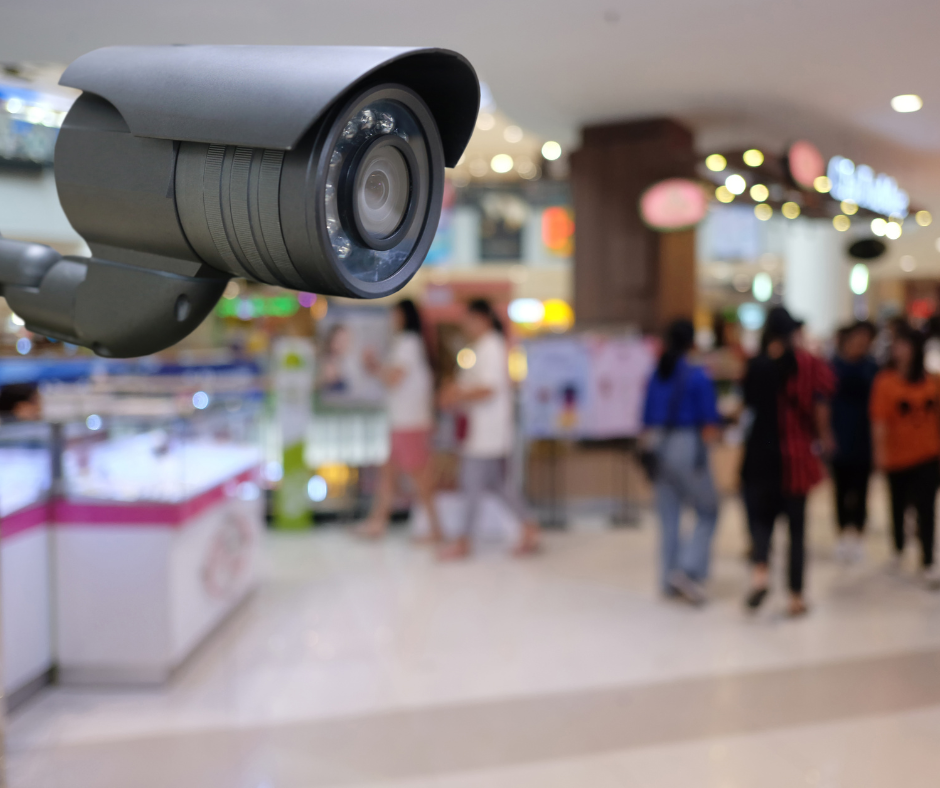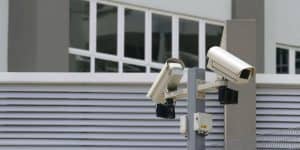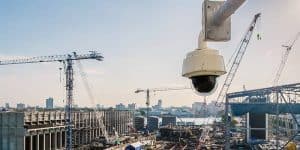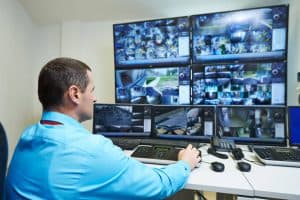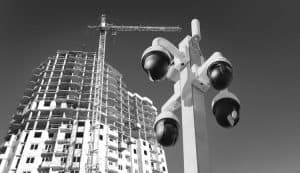In today’s retail landscape, security camera systems have become an essential tool for enhancing store safety and preventing loss. Surveillance cameras not only act as a powerful deterrent to theft, shoplifting, and vandalism, but they also provide real-time monitoring, allowing store managers and property owners to address incidents immediately. These systems play a pivotal role in loss prevention by reducing internal theft, monitoring employee activity, and ensuring adherence to store protocols.
In the event of a crime, surveillance footage serves as crucial evidence for law enforcement and insurance purposes. Additionally, the presence of security cameras fosters a safer environment for both customers and staff, offering insights into store operations that can improve layout and customer service. Ultimately, surveillance cameras offer peace of mind, ensuring a secure and efficient retail experience.
Understanding Store Surveillance Cameras
How Do They Work?
While surveillance systems may seem complicated if you’re not familiar with them, they’re quite simple when you break it down. We like to explain our surveillance system as four parts — the camera, NVR/DVR, hard drive, and cloud storage. Here’s what you need to know about each component:
- Cameras: The “eyes” of the system, capturing video footage. They come in various types like dome, bullet, or PTZ (pan-tilt-zoom).
- NVR/DVR: Network Video Recorder (for IP cameras) or Digital Video Recorder (for analog cameras). These devices process and store the video data from cameras.
- Hard Drive: Physical storage within the NVR/DVR where footage is saved. Capacity varies based on needs.
- Cloud Storage: Off-site storage option allowing remote access and backup of footage. This is especially helpful for insurance claims or legal cases.
Another crucial component of your customized security approach is PoE, which stands for “Power over Ethernet.” This allows a single Ethernet cable to carry both data and power to IP cameras and offers simplified wiring, reduced installation costs, and easier placement. PoE switches can power multiple cameras, eliminating the need for separate power supplies.
Now, for some terms that you’re probably already familiar with, here are some of the important functions of a top-tier surveillance system:
- Motion Detection: Cameras can be set to record only when movement is detected, saving storage space and making review easier.
- Night Vision: Uses infrared technology to capture clear footage in low-light or dark conditions.
- Remote Access: Allows store owners to view live or recorded footage from anywhere using smartphones, tablets, or computers.
These features enhance the effectiveness of surveillance systems by providing 24/7 monitoring capabilities and easy access to footage when needed.
Security Camera vs. Surveillance Camera
The terms security cameras and surveillance cameras are often used interchangeably, but there are some subtle differences in their function and usage:
- Security Cameras: Primarily used to deter crime and monitor specific areas in real-time. These cameras are often visible and placed in prominent locations to make people aware they are being watched, reducing the likelihood of criminal activity. They allow for active monitoring (e.g., one of Zaladium’s camera operators or store managers watching in real-time). Typically, they are a part of a broader system that includes alarms, motion sensors, and sometimes even remote viewing capabilities for an immediate response to incidents.
- Surveillance Cameras: Focuses more on recording activities over time for later review, often covertly. Surveillance cameras are sometimes placed discreetly to gather information over long periods without being noticed. Generally, don’t have someone watching in real-time, but it is used for later viewing when evidence may need to be compiled, or you notice ongoing issues that require observation of patterns over time.
Types of Cameras Used in Retail Stores
Key Varieties and Their Benefits
To the untrained eye, it may seem like any type of security camera is appropriate, but depending on your retail store, its layout, and your most pressing security concerns, the type of equipment used for surveillance will vary. There are many types of security cameras. We’ll break down a few of the most common:
Dome cameras:
- Discreet, compact design
- Often used indoors
- Difficult for intruders to determine camera direction
- Vandal-resistant options available
Bullet cameras:
- Cylindrical shape, highly visible
- Act as a strong visual deterrent
- Often used outdoors
- Generally have longer range than dome cameras
PTZ (Pan-Tilt-Zoom) cameras:
- Can rotate horizontally (pan), vertically (tilt), and zoom in/out
- Cover wide areas with a single camera
- Can be programmed to automatically scan areas or manually controlled
- Ideal for large spaces like parking lots or warehouses
Dual lens cameras:
- Combine two camera sensors in one unit
- Often pair a wide-angle lens with a telephoto lens
- Provide both overview and detailed views simultaneously
- Useful for entrances or point-of-sale areas
Color night vision:
- Uses advanced sensors and processing to capture color footage in low light
- Provides more detail than traditional black-and-white night vision
- Helps with identifying clothing colors, vehicle colors, etc.
As you can see, there are tons of options, and depending on your Houston property, you may actually benefit from a mix of them. During your free assessment, one of our trained security experts can walk you through what will work best for your retail store.
Connectivity and Storage Options
Just as there are many options for the actual hardware used in your surveillance plan, there’s just as much variety when it comes to connectivity and storage. Both of which are essential for a comprehensive surveillance program.
Choosing the right camera setup and storage solution is crucial for ensuring your retail store remains secure. Whether you’re managing a small shop or a larger commercial property, understanding the differences between wired and wireless systems, as well as storage options, will help you make an informed decision.
Wired vs. Wireless (WiFi) Camera Setups
- Wired Camera Systems: Wired systems provide consistent, high-quality video with minimal risk of signal interference. If your priority is reliability—especially in high-traffic or busy areas of your store—wired cameras offer a dependable solution. They are powered through cables, so you won’t need to worry about battery life or interruptions due to weak signals.
- Wireless (WiFi) Camera Systems: If you need more flexibility in your camera placement, wireless cameras are a great option. They are easier to install and can be moved as needed, which is ideal if your store layout changes frequently or if you need to cover hard-to-reach areas. Additionally, wireless systems often allow remote monitoring through mobile apps, letting you keep an eye on your store from anywhere. However, these cameras rely on your internet connection, which means they can be vulnerable to network outages or interference, so it’s important to have reliable WiFi.
NVR vs. DVR: Choosing the Right Recording Solution
- NVR (Network Video Recorder) Systems:
- Advanced Features: NVR systems are perfect for store owners who want cutting-edge video quality and flexible camera setups. NVR works with IP (Internet Protocol) cameras, delivering ultra HD (4K) video, which ensures every detail is captured—essential for identifying individuals or incidents clearly. With NVR, you can access your footage remotely, allowing you to monitor store activity in real-time, even when you’re offsite.
- Scalability: For larger stores or chains with multiple locations, NVR systems are scalable, meaning you can easily add more cameras to cover additional areas of the property as your business grows.
- DVR (Digital Video Recorder) Systems:
- Cost-Effective: If you’re working with a tighter budget and don’t necessarily need ultra-high-definition footage, DVR systems offer a more affordable solution. DVR systems typically work with analog cameras, providing reliable security coverage at a lower cost, making them a solid choice for smaller stores.
- Limitations: While DVRs are a cost-effective option, they are less flexible in terms of camera placement because they require direct wired connections. They also generally offer lower video quality compared to NVR systems, which may be a consideration for stores with higher security risks.
Our trained experts will walk you through the right options for your specific needs.
Monitoring and Management of Store Cameras
Are They Always Monitored?
Effective surveillance is not just about installing cameras—it’s about how those cameras are monitored and managed. For retail stores, having a clear monitoring plan can make the difference between preventing incidents in real time and simply reviewing footage after the fact. Understanding the balance between live monitoring, recorded footage review, and the use of notifications and remote viewing can help store owners implement a more proactive security responsive strategy.
Integration with Other Security Measures
Integrating security cameras with other advanced security measures creates a robust, multi-layered approach to retail protection. By combining camera systems with access control technologies, vehicle detection systems, and two-way audio capabilities, we can establish a comprehensive security infrastructure that addresses various potential threats.
Access control ensures that only authorized personnel can enter sensitive areas, while vehicle detection helps monitor parking lots and loading docks. Two-way audio integration allows for real-time communication with visitors or potential intruders, adding an interactive element to surveillance. However, the effectiveness of these integrated systems relies heavily on their ongoing performance and reliability. This is where warranty coverage and responsive technical support become crucial. A strong warranty protects the investment in security equipment, covering potential malfunctions or defects. Meanwhile, readily available technical support ensures that any issues are swiftly addressed, minimizing downtime and maintaining the integrity of the security system.
For retail establishments, where security breaches can have immediate and costly consequences, having this combination of integrated security measures backed by solid warranty and support services is not just a luxury—it’s a necessity for maintaining a safe, secure, and efficiently run business environment.
The Importance of Surveillance Systems in Retail Stores
Why Retail Stores Need High-Quality Security Cameras
High-quality security cameras are an essential investment for retail stores, serving multiple crucial purposes beyond simple surveillance. First and foremost, they act as a powerful deterrent against shoplifting, vandalism, and other criminal activities. The mere presence of visible cameras can significantly reduce the likelihood of theft attempts, protecting valuable merchandise and assets. Additionally, effective loss prevention strategies, anchored by robust camera systems, are vital for maintaining profitability in the competitive retail landscape. By minimizing inventory shrinkage, stores can safeguard their bottom line and ensure long-term sustainability.
Equally important is the role these cameras play in enhancing both customer and employee safety. Visible security measures create a sense of protection, fostering a more comfortable shopping environment for patrons and a safer workplace for staff. This increased feeling of security not only improves the overall in-store experience but also builds trust and loyalty among customers and employees alike. In today’s retail environment, where safety and security are paramount concerns, high-quality security cameras offer an indispensable combination of crime prevention, loss reduction, and peace of mind for all stakeholders.
Additional Advantages
High-quality camera systems offer dual benefits beyond basic security. They provide crucial legal protection through clear, high-resolution footage, which can be invaluable for evidence collection in incidents ranging from accidents to criminal activities. This documentation safeguards businesses from false claims and aids in conflict resolution. Additionally, implementing advanced security measures can lead to financial advantages. Many insurance providers recognize the risk reduction associated with robust security systems and may offer lower premiums as a result. This potential for insurance savings, combined with reduced losses from theft, makes investing in high-quality security cameras a prudent financial decision for retail stores. These systems not only enhance security but also contribute to a safer, more profitable, and legally protected business environment.
Contact Zaladium for a Free In-person Assessment and Security Plan
Protect your Houston retail property when you install a security surveillance system. Get in touch with our commercial surveillance experts today to learn how we can help secure your commercial property.
We offer a no-charge, no-obligation in-person assessment to get a feel for your security needs and to begin crafting a custom security plan design.

